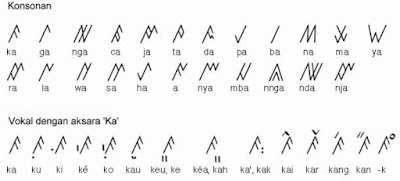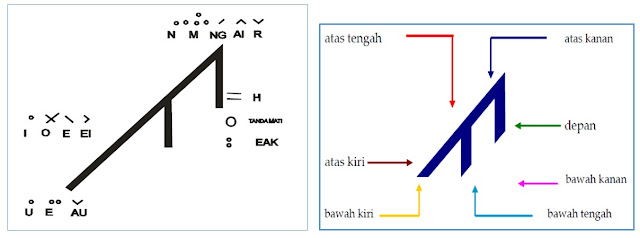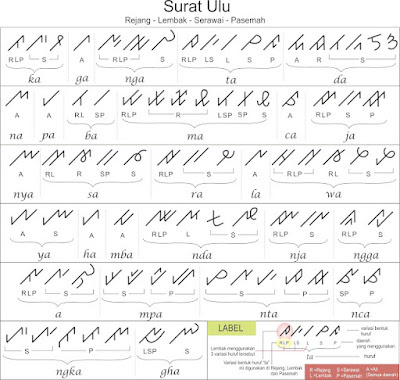Tribal Writing Rejang
The Ulu script, or Surat Ulu in a broad sense, is a family of scripts that developed in the upstream areas of rivers in central to southern Sumatra. This family includes the Kerinci script, the Rejang script, and the Lampung script.
In a narrow sense, "Surat Ulu" refers to the name of the script that evolved in the upstream areas of the Bengkulu and South Sumatra rivers, which is also known as the KaGaNga script (based on the first three letters), Rejang script, Besemah script, Rencong script, and so on. The sample of various groups who can read and write ulu script shows that the literacy rate of the ulu script was fairly high in the past. Every society writes differently depending on their social status and level of knowledge. This script is still used to disseminate Islamic religious teachings. Typically, manuscripts are written on bamboo , media, bark, and paper.
Ulu scripts are now kept by the community as heirlooms, which are only shown and distributed at specific times and through special ceremonies. Individuals usually keep the manuscripts or they become village heirlooms. Ulu script manuscripts do not typically include author information, so the inherited family may not even know who wrote the manuscript. The manuscripts are usually kept in the attic of the house or in a small barn or 'langgar' in the middle of the village with other family heirlooms.
Because the area of use is so broad and includes so many different sub-ethnic and linguistic groups, it is understandable that there are many different script forms that vary from place to place. Each variation of the script has different writing rules in addition to different forms. The Ulu script can be divided into four groups: Rejang script, Lembak script, Serawai script, and Pasemah script.
Surat Ulu's main script, like other Pallawa-derived scripts, is in the form of a syllabus with an innate vowel /a/. However, it is frequently spelled in the local dialect as kê-gê-ngê in Pasemah/Besemah and ko-go-ngo in Serawai, where the use of punctuation is affected. Buak Tuai and Ngimbang scripts (Sengau) make up the main script. The table below depicts the various letterform characteristics that are common in the four regions. (Sarwono and Rahayu 2014).
Script for Ulu in Unicode
Not every variation is encoded in Unicode. The Ulu script is represented as "Rejang script" in Unicode and looks like this:
 |
| Image courtesy of id.wikipedia.org (Note: nnga = ngga is a typo.) |
Unfortunately, this version of Unicode contains some inaccuracies in some of the letterforms that do not appear to correspond to what is found in traditional script.
Script for Rejang KaGaNga The traditional KaGaNga script used in Bengkulu is as follows (Santoso, 2007).
 |
| ( scriptsindonesantara.com font by Aldila Dwiki Himawan ) |
 |
| Diacritical marks and their placement |


